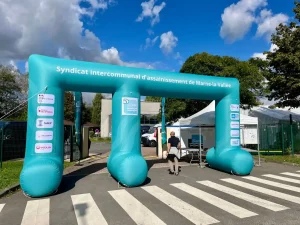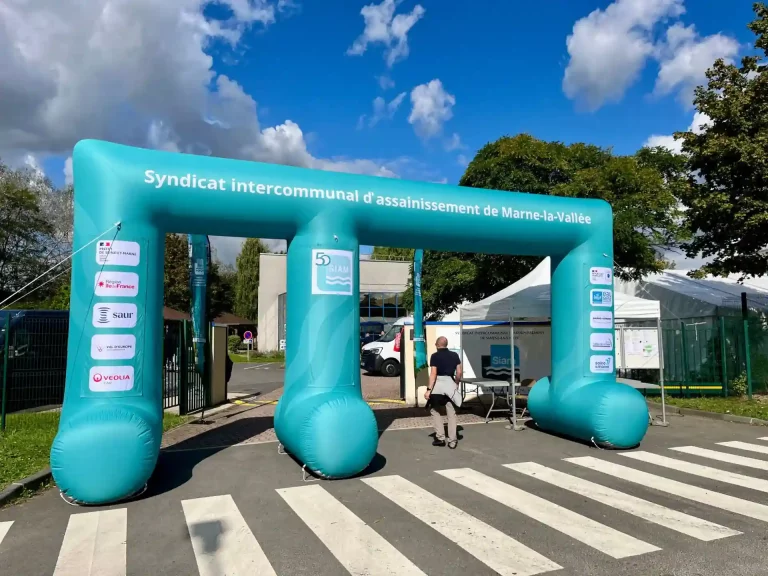Technology’s integration into public administration has transformed workflows across various sectors. From automating routine tasks to enhancing data accessibility, these advancements foster operational efficiency and improved service delivery. As cities adopt smart solutions, they face both opportunities and challenges. Understanding the implications of these technological shifts is vital for effective governance. The question remains: how can public agencies navigate the complexities of this evolving landscape to maximize their potential?
Key Takeaways
- Technology enhances citizen engagement, making communication between city officials and residents more efficient and responsive.
- Automated processes reduce repetitive tasks, allowing public employees to focus on more strategic initiatives.
- Real-time data sharing improves collaboration across departments, streamlining workflows and decision-making.
- Data analytics help identify community needs, enabling targeted resource allocation and informed policy decisions.
- Smart city technologies, such as IoT, optimize service delivery and improve operational efficiencies in public administration.
The Importance of Technology in Modern Public Administration
As public administration evolves in response to increasing demands for efficiency and transparency, the role of technology in public administration has become increasingly pivotal. It serves as a catalyst for enhancing citizen engagement, improving service delivery, and fostering accountability. By integrating digital tools, public agencies can streamline communication, enabling real-time feedback and collaboration between government entities and the communities they serve. In addition, technology facilitates data-driven decision-making, allowing administrators to analyze trends and allocate resources more effectively. As a result, the role of technology in public administration not only enhances operational efficiency but also builds trust within the public sphere. Embracing these advancements ultimately strengthens the foundations of modern governance, ensuring that citizens feel connected and heard in the administrative process.
Streamlining Processes: How Technology Enhances Workflow Efficiency
How can technology transform the workflows of public administration to achieve greater efficiency? The role of technology in public administration is pivotal, enabling the automation of repetitive tasks and facilitating real-time data sharing. Digital platforms streamline communication between departments, reducing delays and enhancing collaboration. By implementing project management tools, public agencies can optimize resource allocation and track progress, ensuring accountability and transparency. Additionally, data analytics allows for informed decision-making, helping administrators respond promptly to community needs. Cloud-based solutions further enhance accessibility, ensuring that personnel can access information anytime, anywhere. Overall, technology fosters a more agile and responsive public administration, ultimately benefiting citizens and reinforcing their sense of belonging within their communities.
Case Studies: Successful Implementation of Technology in City Governance
Numerous cities around the world have successfully integrated technology into their governance frameworks, demonstrating the transformative power of digital solutions. For instance, Barcelona implemented a smart traffic management system that utilizes real-time data to optimize traffic flow, considerably reducing congestion. Similarly, Amsterdam adopted an open data initiative, allowing citizens to access information that fosters transparency and community engagement. In the United States, Los Angeles launched a mobile app for reporting city issues, enhancing citizen participation and expediting response times. These case studies exemplify the role of technology in public administration, showcasing its ability to enhance operational efficiency, increase accountability, and strengthen the relationship between city officials and residents. Such advancements indicate a promising path forward for urban governance.

Challenges and Solutions in Adopting Technology for Public Administration
While the successful integration of technology in public administration has yielded significant benefits, it is not without its challenges. Resistance to change often emerges within bureaucratic structures, as employees may fear job displacement or lack the necessary skills for new systems. Additionally, budget constraints can impede the adoption of advanced technologies, leading to incomplete implementations. The complexity of integrating disparate systems creates further obstacles, as does ensuring cybersecurity in a digital landscape. Solutions involve extensive training programs to build confidence and competence among staff, as well as strategic partnerships with technology providers to enhance resource accessibility. By addressing these challenges proactively, public administration can harness the role of technology in public administration to foster greater efficiency and community engagement.
The Future of Public Administration: Emerging Technologies on the Horizon
What innovations lie ahead for public administration as technology continues to evolve? The future promises a transformative role of technology in public administration, with artificial intelligence enhancing decision-making processes and data analytics providing insights into community needs. Blockchain technology may revolutionize transparency and accountability, while smart city initiatives could streamline services and foster citizen engagement. In addition, the integration of Internet of Things (IoT) devices can facilitate real-time monitoring of public resources, optimizing efficiency. As these technologies emerge, public administrators will need to cultivate digital literacy and adaptability within their teams. Ultimately, embracing these advancements will not only improve workflows but also strengthen the connection between government and the communities it serves, fostering a sense of belonging among citizens.
Frequently Asked Questions
How Does Technology Improve Citizen Engagement in Public Administration?
Technology enhances citizen engagement in public administration by facilitating direct communication, streamlining feedback channels, and providing accessible platforms for participation. This fosters transparency and inclusivity, ensuring that citizens feel valued and connected to their local governance.
What Are the Costs Associated With Implementing New Technology in Government?
Implementing new technology in government incurs costs such as initial investment, training personnel, ongoing maintenance, and potential disruptions during changeover. These expenses must be carefully evaluated against the anticipated benefits for effective public administration.
How Do Privacy Concerns Affect Technology Use in Public Administration?
Privacy concerns greatly impact technology use in public administration by necessitating stringent data protection measures, influencing public trust, and often delaying the adoption of innovative solutions that could enhance efficiency and service delivery.
What Skills Are Necessary for Public Administrators to Use Technology Effectively?
Public administrators must possess technical proficiency, data analysis skills, adaptability, and communication abilities to utilize technology effectively. Additionally, critical thinking and problem-solving skills are essential for maneuvering the complexities of modern public administration’s technological landscape.
How Can Small Municipalities Benefit From Technology in Public Administration?
Small municipalities can enhance public administration through technology by streamlining processes, improving communication, and increasing transparency. These advancements foster community engagement, optimize resource management, and ultimately lead to more efficient governance and better services for residents.
Conclusion
In summary, the integration of technology within public administration is essential for enhancing efficiency and transparency in governance. By automating tasks and leveraging data analytics, public agencies can optimize workflows and improve service delivery. However, the successful adoption of these technologies requires addressing inherent challenges, such as budget constraints and resistance to change. As cities continue to embrace innovative solutions, the future of public administration promises to be more responsive, accountable, and citizen-focused.
You May Also Like To Read:



